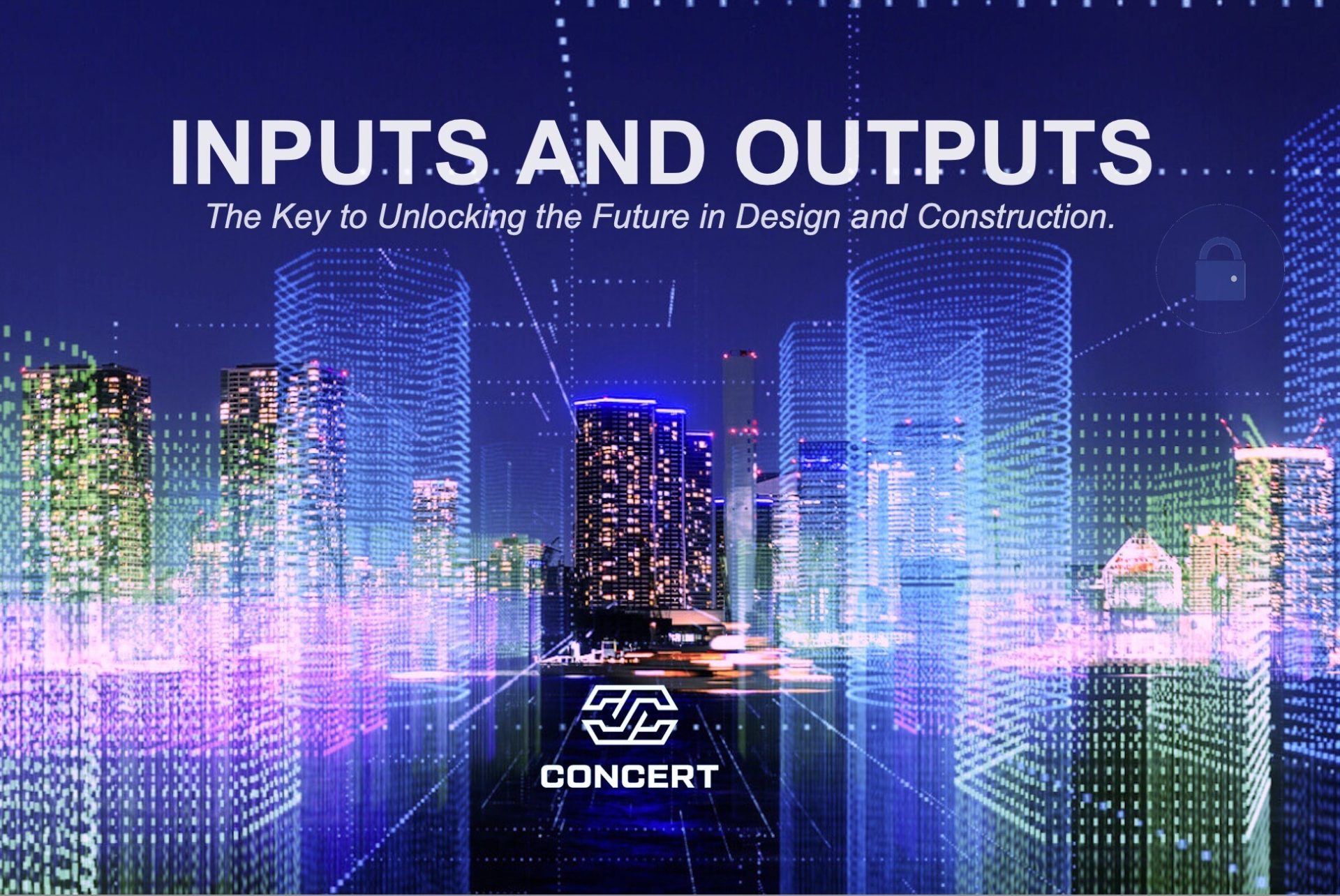by Tim Dufault – Concert CRO
There is a lot of debate in the industry about the definition of BIM. Some say that BIM is a design tool to aptly represent the physical building. Some believe that it is a process for creating and managing a construction project through its lifecycle. We argue that the promise of BIM as a tool and process will not be fully realized until we understand the concept of inputs and outputs.
Classically, the construction documents produced by the architect are considered the singular output from the design process – the contract documents. These documents represent the synthesis of collected data, the realization of the design concept, and how that concept is intended to result in a physical representation. For more than 100 years, this is how the architect and the contractor have collaborated.
BIM transforms the relationship. It does indeed provide a more realistic view of the building, but it also embodies a three-dimensional database of information that can accelerate the construction process and provide an architect with a richer relationship with the project across its lifecycle. In this view, the architect’s BIM outputs are the construction team’s inputs from which they derive schedules, supply chain estimates, progress reporting, etc. Prominent software players like Autodesk see the potential, yet most architects do not consider BIM as an output of their design process. If BIM is not the output, then architects need only put in the effort required to extract the minimum needed to generate an output.
Today, when contractors are given a copy of the architect’s BIM or work collaboratively in BIM, the most common expression is, “the architect’s model can’t be used for construction; it’s not accurate enough.” This results from the architect looking at BIM as a singular output – the plans and specifications. What it misses is the greater value of the data inside the BIM that can be leveraged deeper into the construction process, saving the owner time and money.
To fully leverage BIM throughout the whole design and construction process, architects must shift their thinking to BIM, not as a singular output, but as an input with thousands of potential outputs and ongoing additional inputs throughout the construction process. Beyond construction, the BIM can live on as part of a Digital Twin ecosystem where building function, operations, and physical changes move seamlessly between input and output. An effective Digital Twin relies on accurate data from the design and construction process. Value becomes an ongoing generative process, evolving as each new input or output moves the system forward.
Finally, we can layer advancing AI onto this BIM infrastructure and eliminate the notion of singular inputs or outputs. The line between the two slowly evolves as each data generation grows and learns from previous versions. When we achieve this (arguably in the not-so-distant future), we will have created the ultimate value proposition for building owners; a living ecosystem that constantly improves to provide new value and opportunities.
At Concert, this is the future we envision, and we are building the capacity to achieve it. We focus on creating the immutable truth in the data by building a platform where data sharing achieves the rigor and permanence an ecosystem requires. Good data-sharing practices and good data are our goals. Breaking down the walls that silo that data is core to succeeding – not by forcing it all to live in one place or to be of one type – but by building a clear history of how the decisions and data have evolved and how that data is consumed. In the end, BIM is a process that renders data outputs for consumption and receives data inputs from the real world as the project moves through its entire lifecycle.





